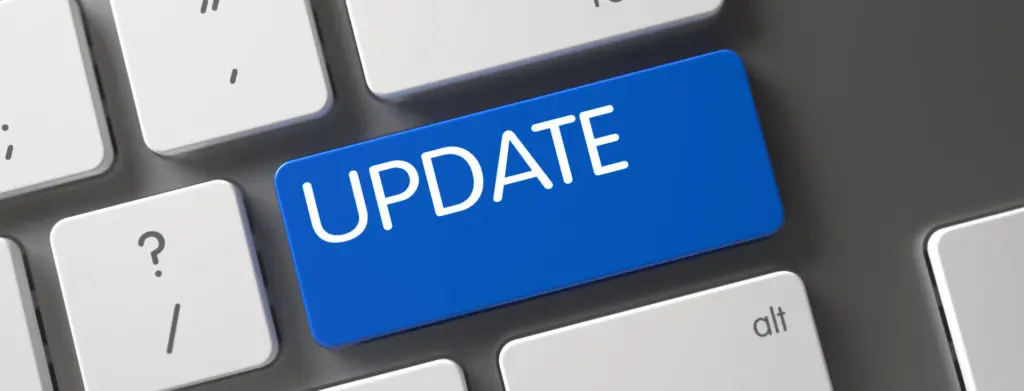Everything You Need to Know About Windows 11

Everything You Need to Know About Windows 11
Microsoft is releasing Windows 11 this month with the official date of October 5th. You may remember Microsoft told us Windows 10 was their last release, and that everything new would just be an update applied to Windows 10. Well, that was so 2015. Here we are now with a new version on the way, and no real explanation of what changed.
What does Windows 11 bring us? It is very much still the core Windows 10 product, so don’t expect any serious and difficult shifts like the old Windows 8 brought us. However, despite being very much Windows 10, it still has many new features. Let’s take a quick look at the most significant ones:
- The look has changed to some degree. Windows now have rounded corners. The Start Menu is now in the center of the task bar with a slightly different look/feel when hovering over it. You do have an option to put things back to the old look, if desired.
- Deeper integration with Microsoft 365 is included with easy access to recent documents and tasks in the Recommended Section of the Start Menu, and quick access to Teams/chat.
- There are new Widgets if you care. Widgets have been in every recent form of Windows, but it seems they are rarely used. They simply give you a quick way to take a look at information that is important to you like calendar, temperature, news stories, and other items that you configure.
- One of the more useful changes is the ability to arrange your windows to a predefined grid and snap them in next to each other for great multi-tasking. There are a host of options like three windows of equal sizes side by side, or one large half screen window and two smaller quarter screen windows, four quarters, and more. This really enhances your screen usage with large and multiple screens.
- Also interesting is the redesigned Microsoft Store. Microsoft is adding third party app stores, so that non-Microsoft Apps can be used. The most notable is the ability to use Android Apps and Apps from the Amazon Store, though these features aren’t slated to be available until 2022. It could be handy to run an Android App on your Windows machine to gain features that were once only available, if you had the phone.
- Windows 11 also has something called Focus Sessions that uses the Pomodoro technique to help you focus in 25-minute bites, and then take a short break. It works with the Microsoft ToDo App and integrates with Spotify.
- Windows 11 also uses less power so might make that laptop battery last longer.
- Other updates include File Explorer, Microsoft Photos, a New Action Center with Notifications, Snipping Tool, Calculator, and Clock.
If you are wondering if it is compatible with your equipment, there is a new published set of system requirements. The most significant one is the need for a TPM chip (Trusted Platform Module) that is 2.0 or greater. It also requires a Direct X12 video card. Some older PCs and laptops may not have these. The official specs are: 1GHz dual-core processor, 4GB RAM, 64GB of storage, UEFI, Secure Boot capable, Trusted Platform Module (TPM) 2.0, Graphics card compatible with DirectX 12, Display larger than 9in with 720p or higher resolution, and Microsoft account + internet connection.
If you are unsure of whether you have the right stuff, Microsoft has a Health Check App available to make sure you can run Windows 11. A quick download and short install, and you can know if you are Windows 11 ready. I ran it on my 2.5-year-old HP EliteBook, and it passed with flying colors, as it should have.
If you are eager to get the new version, it is releasing on a staged plan. As mentioned, the official date is October 5th. Retailers are expected to start selling new machines with Windows 11 quickly. There is not official word on cost, but it is expected to be roughly the same price with a new PC as Windows 10.
Microsoft has stated that they will do a staged release of the upgrade product with the goal of not creating too much disruption too quickly. Official word from their Twitter account is that upgrades will start in 2022, and continue through the first half of the year. These upgrades will be free for existing Windows 10 users.
If you are a bit of a techy, and just can’t wait to see Windows 11. You have two options: buy a new machine with Windows 11, as soon as it is available, or get a preview copy of Windows 11 and check it out. To get a preview copy , you simply register to be a member of the Windows Insider program to be eligible.
Since Windows 11 is mostly a robust feature update from Windows 10, I don’t anticipate any interoperability issues with things like networks, printers, or other devices. It should present a smooth transition for business use.
One thing to keep in mind is that Microsoft’s automatic updates may begin to pop up a notice about the availability of Windows 11 on your Windows 10 machine. If they hold true to not starting updates until 2022, this may be a little way off, or they may use the notification center to begin to prepare you for the update process. Don’t be alarmed by the notification. It should allow you to continue to operate normally.
If you have thoughts or questions about Windows 11 or anything related to business & technology, please get in touch.

Scott Hirschfeld is the President of CTaccess, a Brookfield IT support company that has been helping businesses stop focusing on IT and getting back to doing business since 1990. Under his leadership CTaccess provides the business minded approach of larger IT companies with the personalized touch of the smaller ones. Connect with Scott on LinkedIn.
